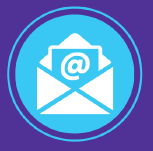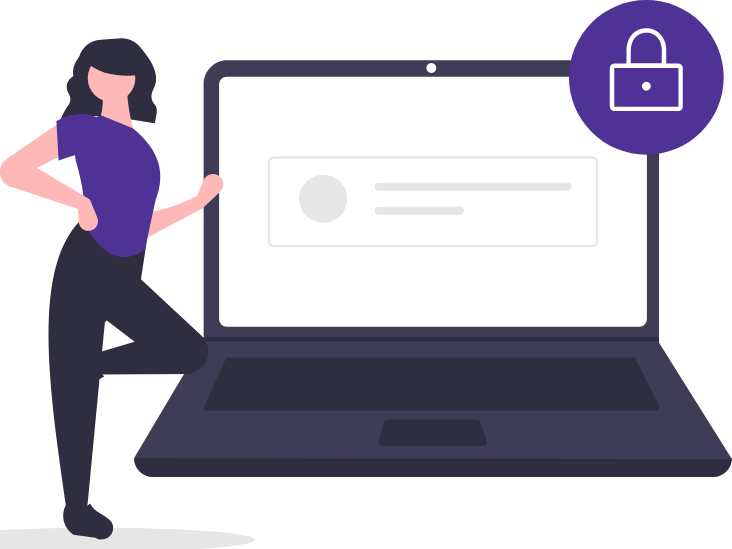Email 101: Basics and best practices
Email, or electronic mail, needs no introduction—it’s one of the most common ways to correspond today. Since its creation in the 1970s, email has become a powerful digital communication tool, used for managing business and finances, shopping, personal correspondence, and more. In this guide, we’ll go over email basics as well as some important safety measures.
Essential email terms
An email is an electronic letter or message that is sent from one computer server to another over the internet. Many people access email using a program like Gmail, Microsoft Outlook, Yahoo, iCloud Mail, and others.
Your email address must be set up through an email provider, such as the ones listed above. You create an account by choosing an email address and securing the account with a strong password. For instance, if you’re creating an account with Gmail, your email address will look something like this: name593@gmail.com. What comes before the @ symbol (“name593” in the example) is unique only to you.
Your email address allows you not only to receive messages from people, but to create other accounts for services like shopping, banking, medical care, and more. For many websites that require signing in (including Quantum Fiber), you will use your email address as your username.
When an email comes to your inbox, it will include a sender name and a subject line. Typically, you’ll see a brief preview of the message, and you can open the email to read the full contents.
At the top of the email, you may also see some of these common elements:
- CC means the sender has sent a “carbon copy” of the same message to more than one recipient. You can add multiple people to this field when sending an email to keep several people in the loop on plans and announcements.
- The BCC option (blind carbon copy) is similar, except it allows multiple recipients to receive the same message without seeing each other’s information or replies. This is a good option when privacy is important.
- You can also forward an email to someone else who wasn’t included as one of the original recipients. This is a popular way to share interesting information with others. If you see FWD: in the subject line, this means you are receiving a message that was forwarded from another source.
- You’ll see RE: at the beginning of the subject line to indicate the message is a direct reply to an email you or someone else sent.
- An attachment is a file sent with an email, like a document or a photo. The recipient can download or open the attachment. Attachments can carry computer viruses, so always be cautious about any attachment that you don’t recognize or comes from someone you don’t know personally.
One of the most annoying aspects of email is spam. These are "junk mail” messages that you never asked for, often coming from a business or organization trying to sell something or get you to sign up for their service. Most email programs are pretty good at filtering out spam automatically and placing it into a special folder to keep it out of your main inbox. But if spam messages slip through the filter and land in your inbox, you can mark them as spam, which will block any future messages from the same sender.
Finally, email programs all have systems to label, filter, and sort email messages into folders. For example, you might have folders called Family, Finances, and Online Shopping, where you organize and save emails so you can find them easily. You can do as much or as little with these features as you want, but most people find they are essential to keeping information organized.
Email safety tips
Your email inbox is likely to be full of messages from friends, family pictures, official account notifications, online order confirmations, and more. But unfortunately, it’s also a place where dangerous content can come into your computer or smartphone. With email being so widespread, it’s all too easy for dishonest groups or individuals (called “bad actors”) to get email addresses from various sources, including data leaks and organizations that sell your information to others.
But don’t panic. It’s not difficult to help protect your email so long as you follow these four key guidelines.
- Never open an attachment from someone you don’t know. Scammers and hackers often load attachments with malware, a type of software (like a computer virus) that can mess up your computer or steal your data. And, in fact, it’s wise to not even open an email from an address or with a subject line that doesn’t seem familiar. Best to mark it as spam or delete it. You may even want to block the sender if they repeatedly send you messages.
- Never send personal information, like your social security number or financial information, by email. If someone is asking for these things, be suspicious. If you know the purpose is valid, such as sharing a credit card number with a family member, find another way to get them the info, such as over the phone. Emails can be intercepted, and information stolen.
- Learn to recognize phishing. Let’s say you get an email from your bank, and it looks like other emails you’ve received from your bank. But they are asking you to “confirm” your personal information or your account number immediately, or they want you to click on a link to go somewhere else online. Stop and think before you act! This could be a phishing attempt, a type of scam where criminals use fake emails to trick you.
A good rule of thumb is to get more information before doing anything. Contact the company that supposedly sent the email, and don't use the phone number or link from the email, because they could be part of the scam. Instead, look up their number on their official website, and call to verify with them directly whether they sent out the request you received.
- Keep antivirus software up to date. For antivirus software to be effective, it must be kept current. This way, the latest malware and viruses are identified and blocked from your devices. 360 WiFi from Quantum Fiber comes with security built in, which will protect any device connected to your WiFi network. It’s just one of the many features Quantum Fiber provides to give you peace of mind.
This is just the tip of the email iceberg, but understanding these few details and guidelines should help you send and receive email and navigate email platforms with greater confidence and ease. Stop by our Web Basics page to find more articles if you want to get back to basics or brush up on your general web knowledge.
This content is provided for informational purposes only and may require additional research and substantiation by the end user. In addition, the information is provided “as is” without any warranty or condition of any kind, either express or implied. Use of this information is at the end user’s own risk. All third-party company and product or service names referenced in this article are for identification purposes only and do not imply endorsement or affiliation with Quantum Fiber. This document represents Quantum Fiber’s products and offerings as of the date of issue. Services not available everywhere. Quantum Fiber may change or cancel products and services or substitute similar products and services at its sole discretion without notice. ©2024 Q Fiber, LLC. All Rights Reserved. Quantum, Quantum Fiber and Quantum Fiber Internet are trademarks of Quantum Wireless LLC and used under license to Q Fiber, LLC.
Was this information helpful?





